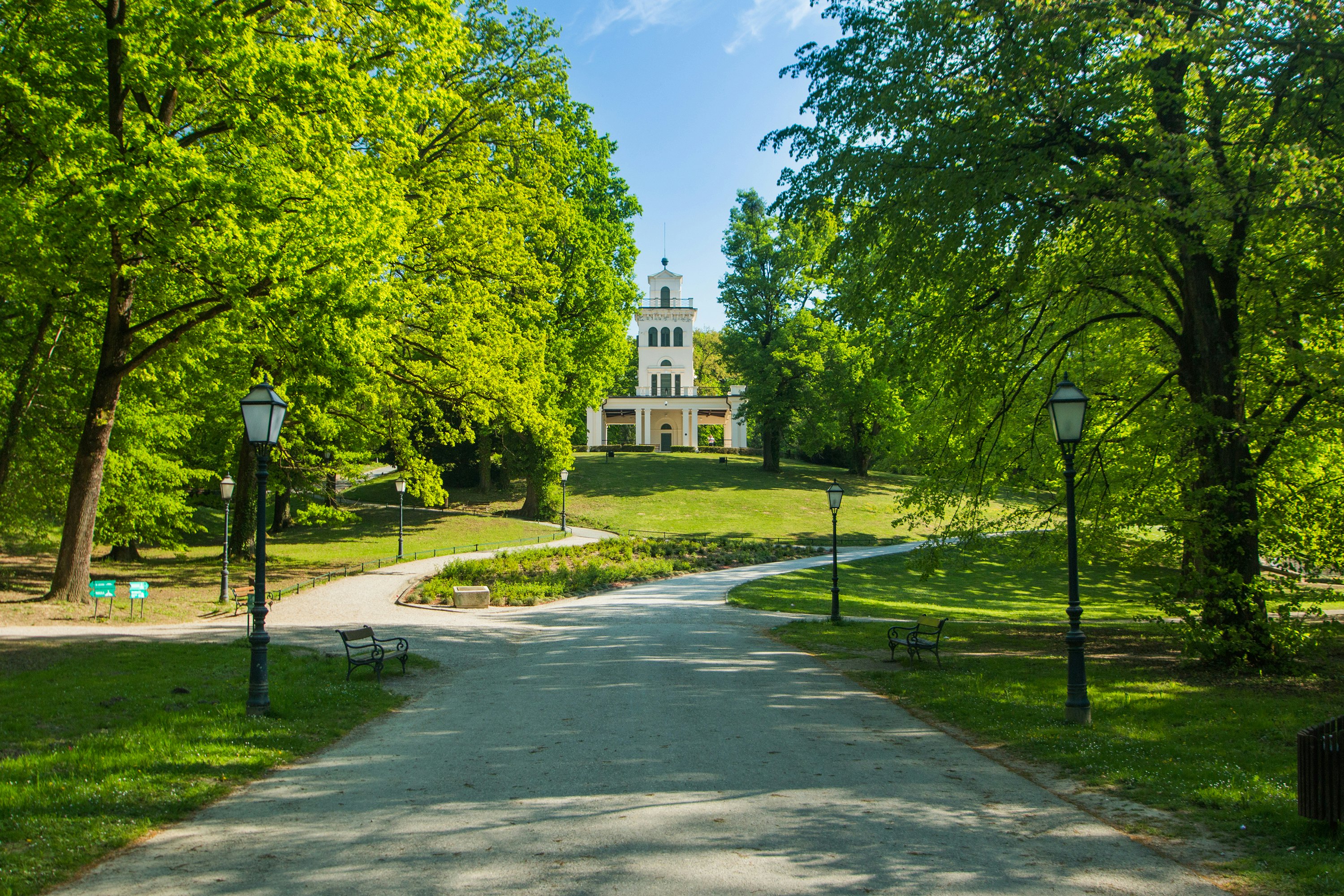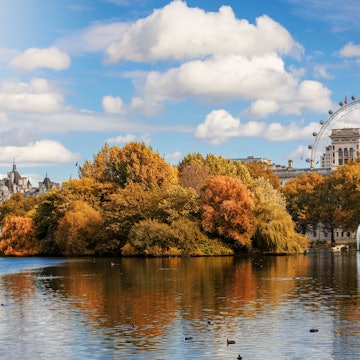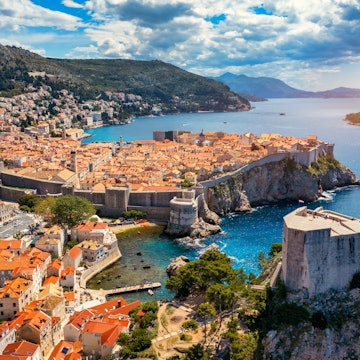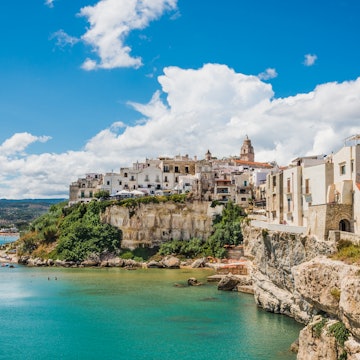

There's plenty to see and do in Zagreb, from quirky museums to drinking coffee in cool cafes. trabantos/Shutterstock
Once seen as a mere stop-over on the way to the Adriatic Coast, Zagreb has firmly placed itself on the map of small European cities on the rise. The capital of Croatia is a laid-back, beautiful city that’s big on culture and pavement cafes, with vivacious street life spanning all four seasons, a clutch of offbeat museums and green spaces galore.
Wander through the Upper Town with its dense history and cobblestone charm. See the domes and ornate frippery of the Lower Town, with its mash-up of architectural styles and green hideaways. Check out Zagreb’s quirky museums and dive into the city’s small but burgeoning art scene. And whenever you need a boost, do as locals do and head to a cafe for coffee.
Cafe culture is just the most obvious facet of Zagreb’s irrepressible energy, which is fueled by a year-round bounty of public events, bringing music, pop-up markets and food stalls to squares and parks across the city.
Whether it’s your first visit to Croatia’s capital city or your fifth, there’s always plenty to see and do. These 22 best things to do in Zagreb are a great place to start.

1. Indulge your senses at Dolac Market
Immerse yourself in local life at Dolac Market, a bustling farmers market dotted with red parasols and countless stalls overflowing with fresh fruit and vegetables. With its pops of color, the so-called “belly of Zagreb” offers a field day for photographers as vendors from all over Croatia gather to hawk their garden-fresh produce.
The main part of the market sits in an elevated square; at street level, you’ll find indoor stalls selling meat, dairy and flowers. Head to the northern end of the market for locally produced honey, oil, handicrafts and fast-food kiosks.
Planning tip: Right by the fish shop on Dolac, pop into Bistro Amfora, a frozen-in-time spot serving traditional Croatian dishes and fresh seafood from next door.
2. Gaze on heart-breaking mementos at the Museum of Broken Relationships
From romances that withered to broken family connections, the wonderfully weird Museum of Broken Relationships explores the mementos left behind when a relationship ends. On display are donations from around the globe, ranging from the hilarious to the heartbreaking, each with a story behind them. Check out the adjacent gift store – their “bad memories eraser” is a bestseller – and the cozy cafe with pavement tables.
Planning tip: Purchase the Zagreb Card for free transport all around the city and free entry to five top city museums, including the Museum of Broken Relationships.

3. Listen for the midday cannon blast from Lotrščak Tower
Brace yourself for a loud boom at noon sharp every day in Zagreb. It’s not an explosion but the sound of the Grič cannon in the Lotrščak Tower, which has been marking midday for the last 100 years. Built in the mid-13th century to protect the south city gate from invaders, the medieval tower is an Upper City icon with a wonderful panoramic viewpoint upstairs, open to visitors (except on Mondays) for sweeping, 360-degree views of the city.
Planning tip: If you climb the Lotrščak Tower, take a moment to browse the exhibitions on the first and second floor, as well as the souvenir shop on the ground level.
4. Admire the twin spires of Zagreb Cathedral
The spires of Croatia’s largest religious building, the Cathedral of the Assumption of the Blessed Virgin Mary, have soared over the city for eight centuries. The original structure has been transformed and reconstructed many times due to fires and earthquakes, but its signature neo-Gothic look came about at the turn of the 20th century.
At the time of writing, the interior was closed for repairs after an earthquake in 2020, which knocked the top off the southern spire and caused other damage. However, this imposing structure is worth seeing, even if only from the outside.
Planning tip: From mid-April to mid-October, check out the twice-monthly changing of the guard ceremony. Reenactors wearing traditional soldier garb known as the Cravat Regiment join the celebrations, and the pageantry starts at Trg Bana Jelačića at noon and continues to the cathedral.
5. Pause at the eastern gate’s soulful shrine
This eastern Stone Gate to medieval Zagreb, then known as Gradec, is a serene spot to pause while wandering around the city. According to legend, a great fire in 1731 destroyed the original wooden gatehouse but spared the painting of the Virgin and Child. People believe that the painting possesses miraculous powers, and visitors come regularly to pray, light candles and leave flowers as offerings.

6. Admire the ornate tombstones at Mirogoj Cemetery
One of the most beautiful cemeteries in Europe, Mirogoj is a monumental graveyard designed in 1876 by Austrian-born architect, Herman Bollé. The majestic main arcade, topped by ivy-covered cupolas, looks like an imposing fortress from the outside, but it feels calm and graceful on the inside.
The final resting place of some 300,000 souls, including many famous Croatians, Mirogoj is like an open-air art gallery. Choose a dry day for a rewarding stroll along its maze of leafy lanes, and look out for the graves of luminaries such as Dr Franjo Tuđman, Croatia’s first president, and Herman Bollé himself.
7. Scale the hills of Zagreb on the funicular
The steep streets of the Upper Town can be a strain on the knees, but luckily there’s a shortcut. The city’s iconic blue funicular, said to be the world’s shortest cable railway used for public transport, has connected the Lower and Upper Towns of Zagreb since 1890. The ride takes just 64 seconds, has great views and costs almost nothing – catch the funicular from Tomićeva, just off Ilica, and disembark by the Lotrščak Tower.
8. Grab a beer at Garden Brewery
This boutique craft brewery and taproom is worth the schlep out to Žitnjak, an industrial district in eastern Zagreb. Inside the huge glass atrium of an old brick factory, planted with more than 40 trees, Garden Brewery offers 20 taps pouring their house ales fresh from the source.
The brewery stages a variety of events including farmers markets, pub quizzes and lively DJ parties. There’s street food on-site and guided brewery tours take place at weekends.

9. Stop at iconic St Mark’s Church
The 13th-century St Mark’s Church is one of Upper Town’s most iconic sights. The show-stopper here is the glazed tile roof, with the medieval coat of arms of Croatia, Dalmatia and Slavonia on the left side, and the emblem of Zagreb on the right. The church is only open during mass, so take the chance to peek inside if you happen to be around at the right time.
Detour: When you visit, be sure to stop for a beer or a glass of gemišt (white wine diluted with sparkling water) in Zagreb’s oldest cafe, Pod Starim Krovovima. It’s on Basaričekova, around the corner from St Mark’s Church.
10. Wander the curious Grič Tunnel
Connecting Mesnička and Radićeva, the mystery-laden Grič Tunnel provides a welcome respite from the summer heat. Built in 1943 for use as a World War II bomb shelter, it sits empty except on special occasions, when it hosts art installations, fashion shows and holiday festivities.
It’s highly atmospheric, and even a little spooky when empty. Enter from Mesnička or below Stross and exit via the passageway just off Ilica, next door to NAMA department store.
Planning tip: If you visit Zagreb during Advent, the tunnel hosts an immersive holiday-themed light show.
11. Visit off-beat museums
Zagreb is home to quite a collection of unique museums. In Upper Town, go retro at the Zagreb 80s Museum where kids can have fun dressing up in 80s fashions and trying to figure out how all those low-tech gadgets work.
In Lower Town, you can take in drunken tales at the Museum of Hangovers on Vlaška. Nearby, the New Wave Museum will take you on a musical journey back to the late 1970s and early 1980s, when the city was the focus of a thriving punk rock scene.
In the Typhlological Museum on Draškovićeva, you can experience artwork by the visually impaired and learn about Braille. At the Chocolate Museum on Gundulićeva, admission includes a chocolate tasting straight from your ticket, which comes in the form of a chocolate box.
Travelers can learn the difference between hemp, cannabis and marijuana (still very much illegal in Croatia) at the Cannabis Museum on Trg kralja Tomislava, or view a collection of 1200 freeze-dried mushrooms at the Mushroom Museum on Splavnica, including some highly poisonous varieties.

12. Pop into the shops along Radićeva
One of the most scenic ways to approach the Upper Town is along this steep, charming, cobblestone street, one of the oldest in Zagreb. In the 19th century, Radićeva was a buzzy place for trading, and it still draws a crowd today.
Tourists come to see its historic townhouses, now home to gift shops and boutiques selling local arts, crafts, artisan food products and designer fashions. Take your time investigating the storefronts – some offer samples of drinks such as rakija (grappa) and other treats to fuel your journey.
Detour: Don’t miss the street art that adorns the Zakmardi Steps (Zakmardijeve) that lead up from Radićeva towards Stross.
13. People-watch from a streetside cafe
For a spot of people-watching, stroll up and down charming, pedestrianized Tkalčićeva – Tkalča to locals. The street is lined with pastel-colored townhouses and cafe terraces that bustle with life day and night.
Another great place or people-watching is Zagreb’s main square, Trg Bana Jelačića, with an equestrian statue of Ban Jelačić and clock tower that serve as the area’s main rendezvous points. Sit in one of the cafes and watch the tram loads of people getting out, greeting each other and dispersing among the newspaper kiosks and flower stalls lining the strip towards Dolac.
Planning tip: Ban Jelačić Square kicks off the winter holiday festivities in Zagreb with its renowned Christmas market and the ceremonial lighting of the city’s first advent candle.
14. Soak in the tree-lined beauty of Zrinjevac
Officially called Trg Nikole Šubića Zrinskog, but lovingly known as Zrinjevac, this verdant square is a popular hangout on sunny weekends, and it serves as the venue for many festivals and events, most centered on its ornate music pavilion.
Zrinjevac is part of the Green (or Lenuci) Horseshoe, a U-shaped sequence of seven city squares. Follow it to explore many of the Lower Town’s best museums, galleries and attractions, including the Croatian State Archives, Museum Mimara and the Art Pavilion.

15. Enjoy a meditative moment in the Botanical Garden
Zagreb’s lovely botanical garden, steps from the main train station on Marulićev trg, has a maze of meandering paths that are perfect for serene strolling and thoughtful meditation. Laid out in 1892, the garden has an English-style arboretum, a greenhouse with giant water lilies, parterre flowerbeds and a pretty wooden bridge.
Look out for the Red Pavilion, an elegant piece of traditional wooden architecture. Just outside the gardens is Botaničar, a stylish cafe and bar that makes a handy spot to stop for lunch or a drink.
16. Have your cake and eat it too
To discover the sweeter side of Zagreb’s food scene, try the local cake shops and patisseries. On Vlaška right below the cathedral, Amélie features French cakes and tables on the terrace, while nearby Meet Mia serves doughnuts, eclairs and other sweet treats. Try štrukli, a traditional Croatian dumpling filled with cottage cheese, at La Štruk.
Another Zagreb institution, the famous slastičarnica (patisserie) Vincek on Ilica has been a favorite stop for ice cream since the 1970s. Right by the funicular, Vincek’s little sister, Vis à Vis, dishes out health-conscious treats, with plenty of vegan, gluten-free and white-sugar-free options. With three branches around the Lower Town, Korica is the go-to bakery for pastries and sandwiches to go.
17. Hang out in Zagreb’s “design district”
The eastern edge of the city center has become a hot and happening neighborhood. Hailed as Zagreb’s “Design District,” though few locals really call it that, it’s a hangout for creatives, designers, trendsetters, liberals and free thinkers.
Stop at the book-themed cafe, Booksa, to chat and drink coffee, browse the library and hear live book readings. Along the pedestrian strip of Mala Martićeva, with its colorful, mural-painted pavement, you’ll find Program, a chic cafe-bar and neighborhood hub.
A short walk away lies one of the coolest bars in Zagreb, the buzzy and smoke-filled Mr Fogg, with its dark steampunk interiors spread across two floors. Pizzeria Park on Mala Martićeva, next to Booksa, is the area’s go-to stop for doughy goodness.
Detour: On the outer edge of Zagreb’s design district, Galerija Miroslav Kraljević explores contemporary art, with work by international and Croatian artists.

18. Experience the buzz of the city’s coffee ritual
Specialty coffee in Zagreb has become one of the city’s top draws with Ilica’s Elis Caffe kicking off the movement. Then came Cogito Coffee, Croatia’s top boutique roasters, with a focus on fresh, in-season coffee beans. Another roastery and coffee shop worth checking out is Quahwa, which serves some of the finest Arabica beans in Zagreb, from strong lattes to traditional Turkish coffee.
Planning tip: Pair your coffee with a local Zagreb tradition – špica. This social ritual, happening every Saturday between 11am and 2pm, is basically upgraded people-watching while wearing your best clothes and sipping coffee. The best places for špica are the sidewalk tables along Bogovićeva, Preradovićeva and Tkalčićeva.
19. Pay a visit to the Esplanade Hotel
Even if you’re not spending the night at the Esplanade Zagreb Hotel, consider paying a visit to this splendid masterpiece of belle époque architecture. Any sunny day is a good excuse for a drink on the gorgeous Oleander Terrace. A must-do experience for food lovers is dining at Zinfandel’s, where chef Ana Grgić Tomić concocts creative contemporary interpretations of classic Croatian dishes. Save room for the legendary štrukli at Le Bistro, a staple at the hotel since 1951.

20. Roam the woods and lakes of Maksimir Park
The peaceful enclave of Maksimir Park is one of Zagreb’s most treasured green spaces. It’s only a 15-minute tram ride to the east of Trg Bana Jelačića. The park is landscaped like an English garden, with alleys, lawns and a series of lakes and woods.
The most photographed structure here is the exquisite Vidikovac (Viewpoint) pavilion in the center of the park. Also pause to sing a song inside the park’s Echo Pavilion, and check out the rustic Swiss Cottage house.
21. Explore the “Sea of Zagreb”
Located in the southern part of Zagreb, Jarun Lake is a popular getaway for residents, especially in summer. Although part of the lake is marked off for boating competitions, there’s plenty of space for a leisurely swim. On arrival, head left to Malo Jezero for swimming and canoe and pedal-boat rentals, or right to Veliko Jezero, for the pebble beach and windsurfing.
22. Catch Croatia’s biggest flea market
At Jakuševec, Croatia’s largest and most vibrant flea market, you can find everything from everyday items to unique, large-scale treasures. It’s a side of Zagreb you probably won’t see anywhere else – expect lots of Roma visitors, music and grilled meat smoking in the food section.
Planning tip: The flea market is about 9km (5.5 miles) from the city center, but there are bus connections. It’s open from 7am to 3pm on Wednesdays and Sundays.
This article was adapted from Lonely Planet's Croatia guidebook published in March 2024.
















